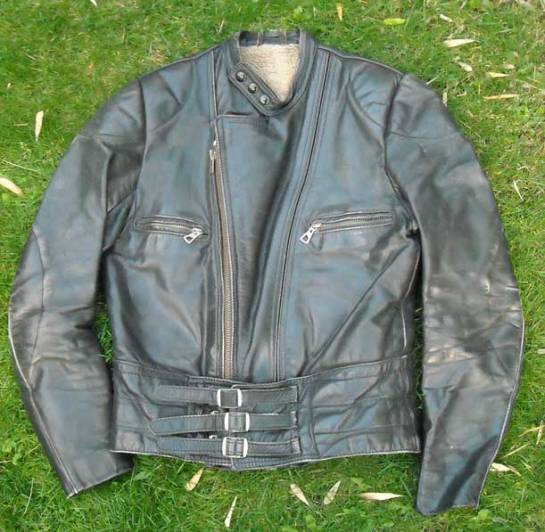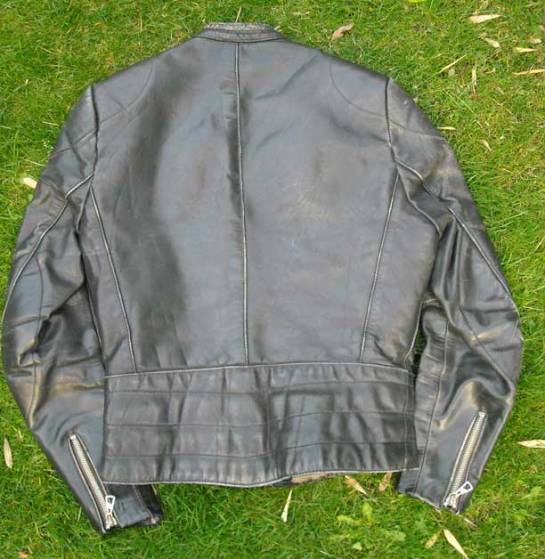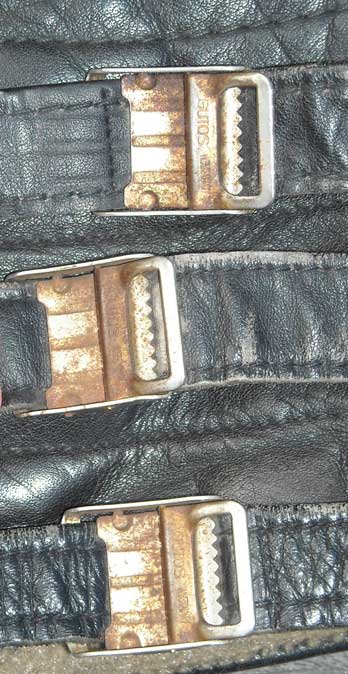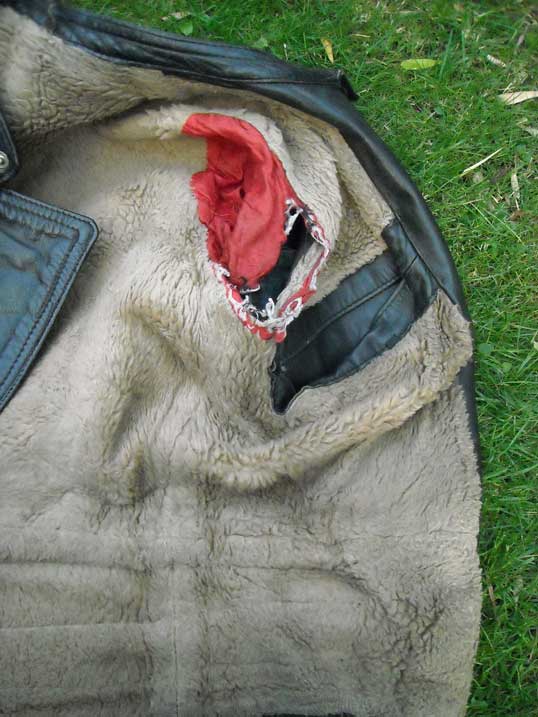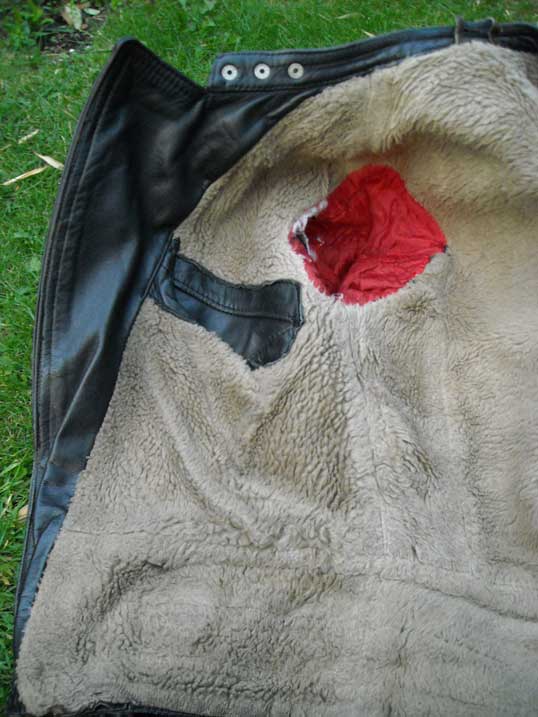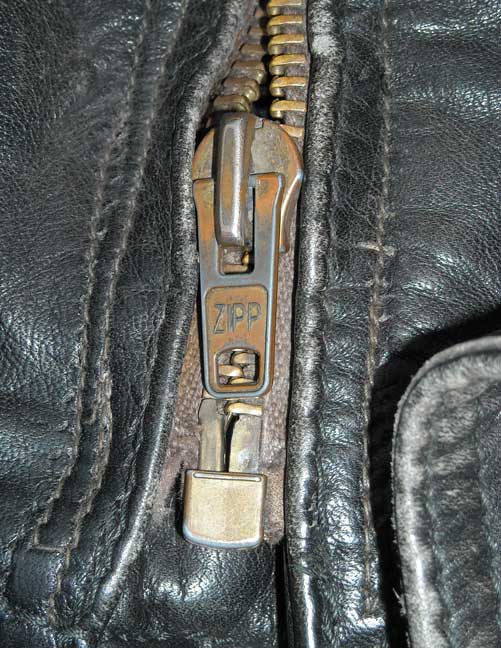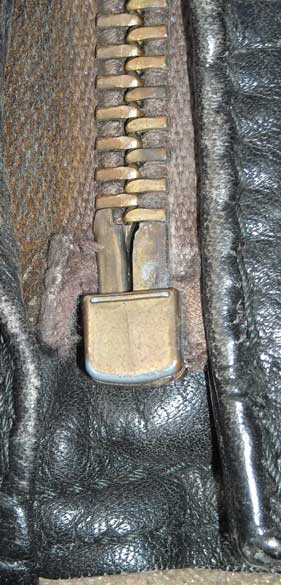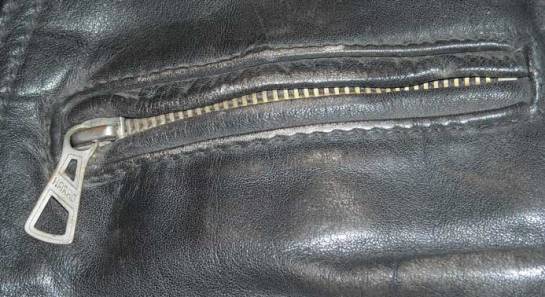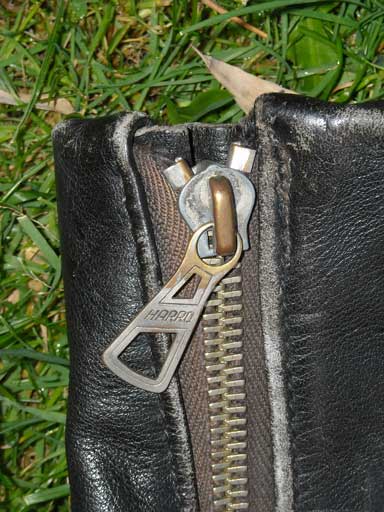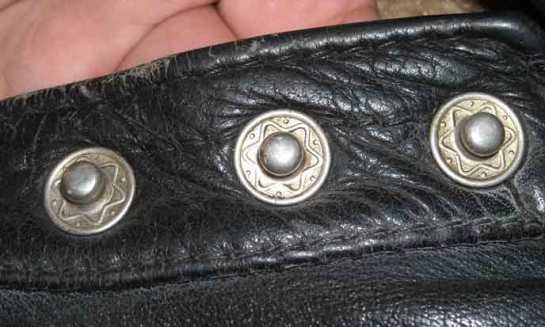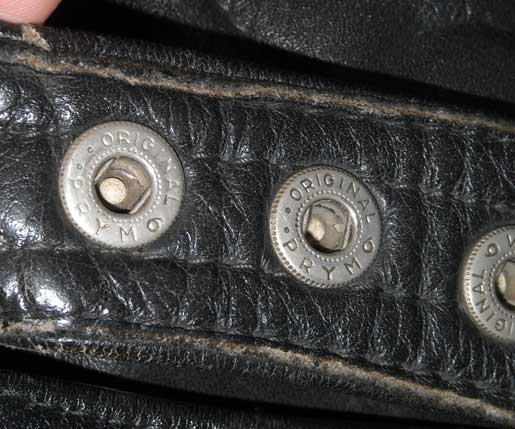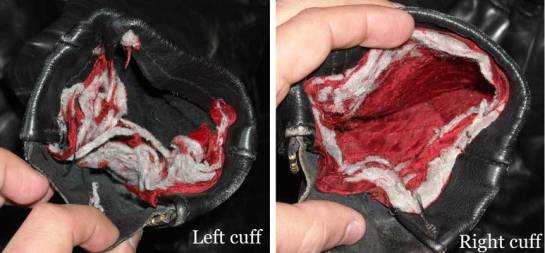A strange tie from the late 1940s or early 1950s. In person this really makes my head spin. Very difficult to focus on for too long … made of very fine crepe material.
Monthly Archives: September 2012
Before and After
Skinny
This sportscoat dates to the middle 1920s. The revolution in American menswear in the late 20s really was extreme. From jackets like this – long line, very narrow shoulders, VERY tight to the chest and waist – which offered no forgiveness to anyone slightly overweight, slightly shorter than average, not of the ideal “cult of youth” dimensions, in the late 20s the shoulders got wider and more padded, the jackets shorter, more forgiving to different body shapes.
It’s interesting that in the 20s, when women’s fashions tended, however flamboyant and luxurious the fabrics, towards shapeless sacks which could at least in theory accommodate many different body shapes, men’s fashion was obsessed with one body type – long and skinny. The trousers were even more extreme, with very narrow legs – try getting your rugby player thighs into those! This fashion probably grew out of the cult of youth that followed the First World War, which was rather chastened by the stock market crash, driving men’s fashion in a more conservative, egalitarian, direction.
Glacé Kid Boots
These excellent 1950s or earlier British work boots were found by a friend in a charity shop in the Midlands. The pull tab on the rear says that they’re made of Glacé Kid (goat hide). I would say this applies only to the quarter (ankle/leg) portion of the boot. There appear to be 2 different hides used in the boot – for the cap and vamp, it appears to be calf, and Glacé Kid for the quarter. The vamp and cap don’t have the glassy, grainy look of Glacé Kid that you can see in the quarter. Maybe I’m wrong. But whatever, these are fantastic, functional boots, and very modern looking, despite their age. I really love the hand finish on the heel – very stylish finish. A perfect work/casual boot.
My Eyes!
The late 1940s gave rise to some of the most godawful ties in the history of menswear. Surpassed only by the 1970s (and only because they made godawful ties out risible manmade fabrics) the Bold Look era ties could get pretty garish. This is one of the worst I’ve ever seen. 5 inches (!) wide at the blade, and airbrushed green sunburst design with some sort of wing’d, or leaf-sprouting box. Who knows what the artist was smoking when generating this “masterpiece” … Made for Ohrbach’s, artist is un-named.
Dog & Flowers
Autumn Leaves
Wrangling Frogs
Standard Quality
Heavy Bullhide
The leather used in vintage German leather jackets, the legendary heavy bullhide is amazing stuff. So much heavier than the leather being used elsewhere during the same period, it lends a special feel to German leather of the era, making it very desirable. This Cafe Racer-style jacket is probably from soon after WWII. It is cut along very elegant lines, as Cafe Racers tend to be, and has several nice features like the reinforced shoulders and elbows (you can see the lines of stitching), and built in kidney belt with 3 Gutos brand quick-release buckles at the front. Many German leathers are lined in heavy plaid wool. This one has a faux-fur lining. The zips all appear to be original, the main zip by ZIPP, and the rest – chest pockets and arm cuffs) by Harro, both venerable German brands. The snaps to secure the throat latch are the classic German PRYM brand snaps.


















